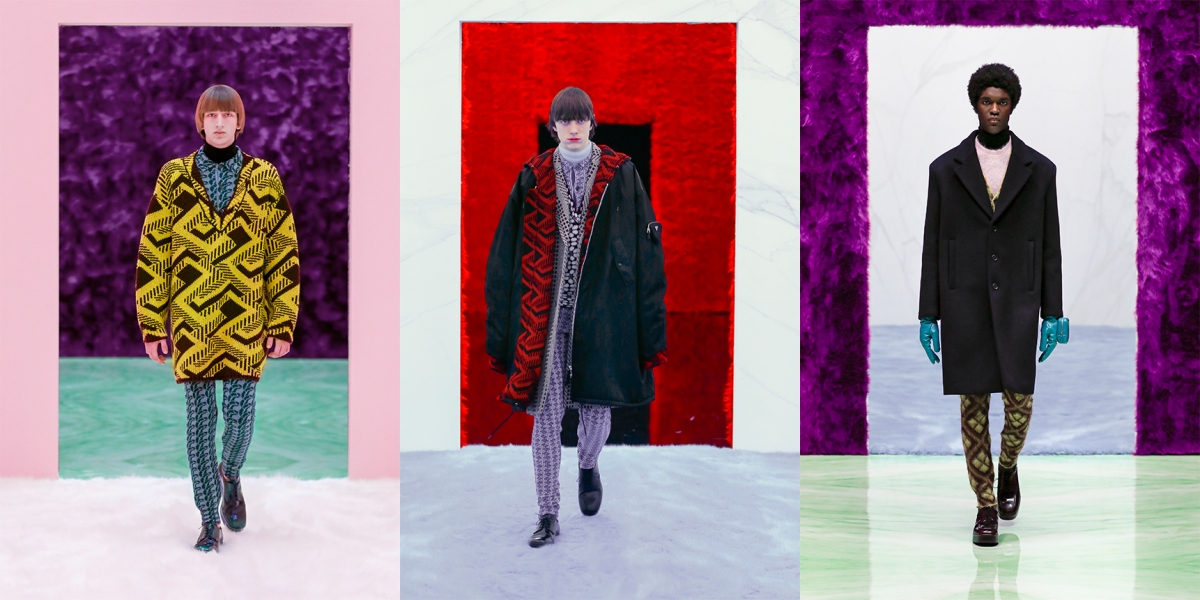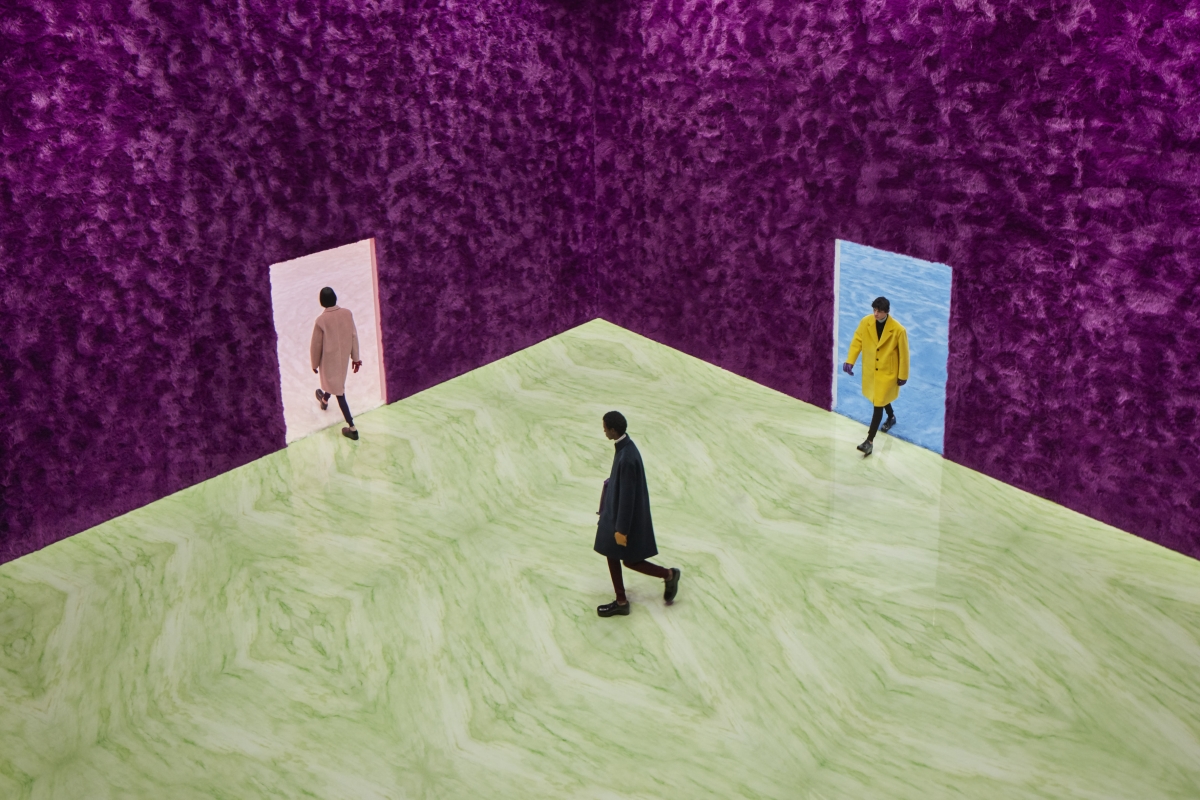
Image courtesy of OMA / ©Agostino Osio
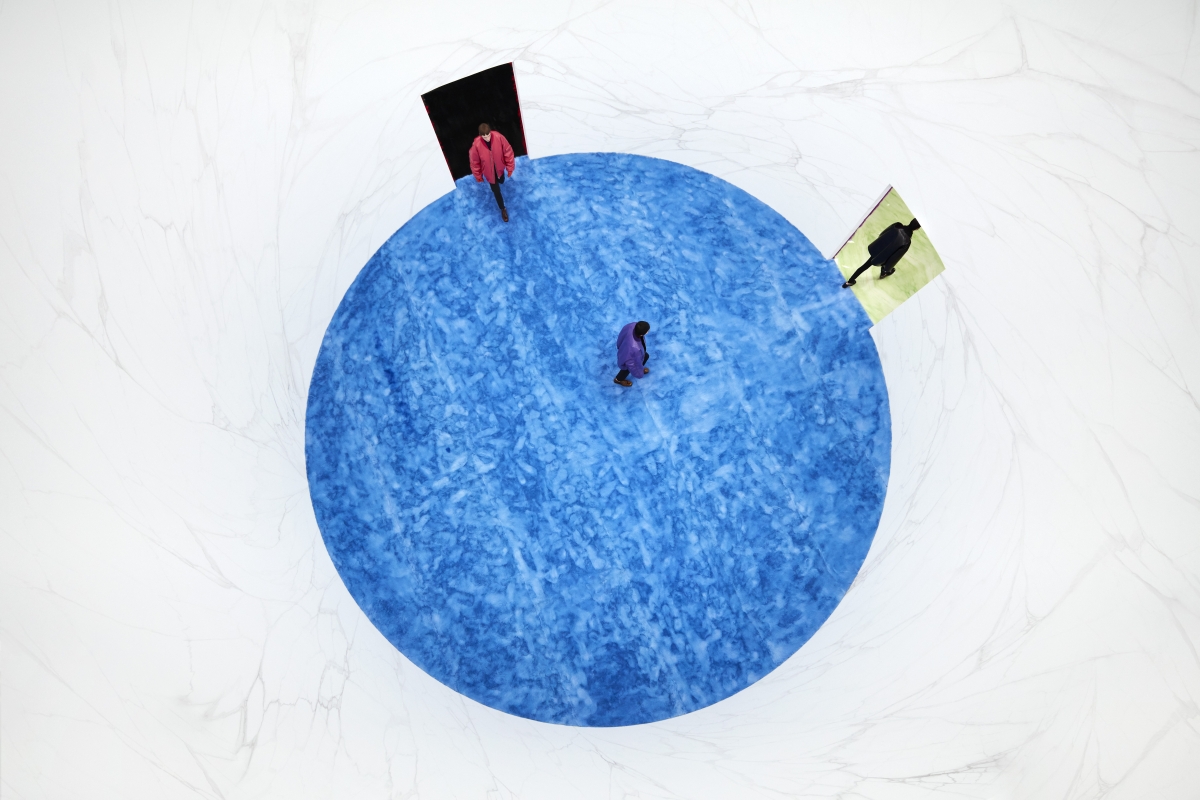
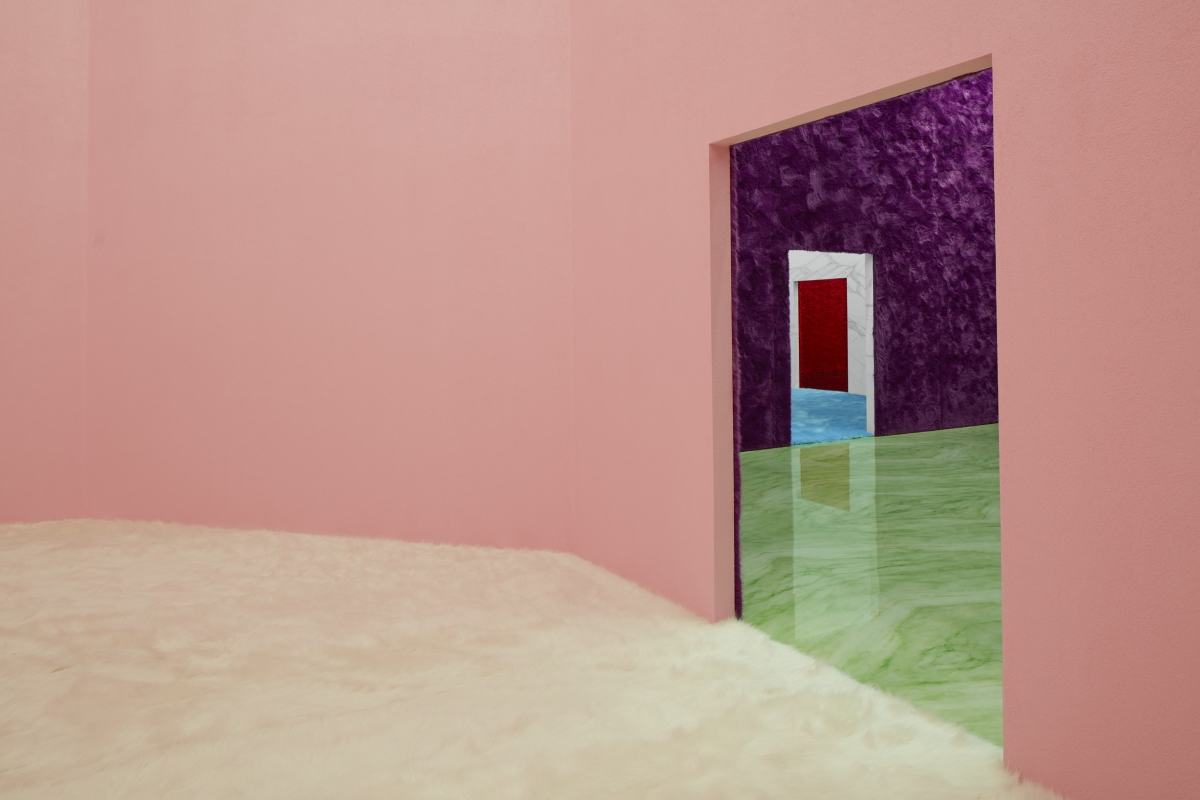
Image courtesy of OMA / ©Agostino Osio
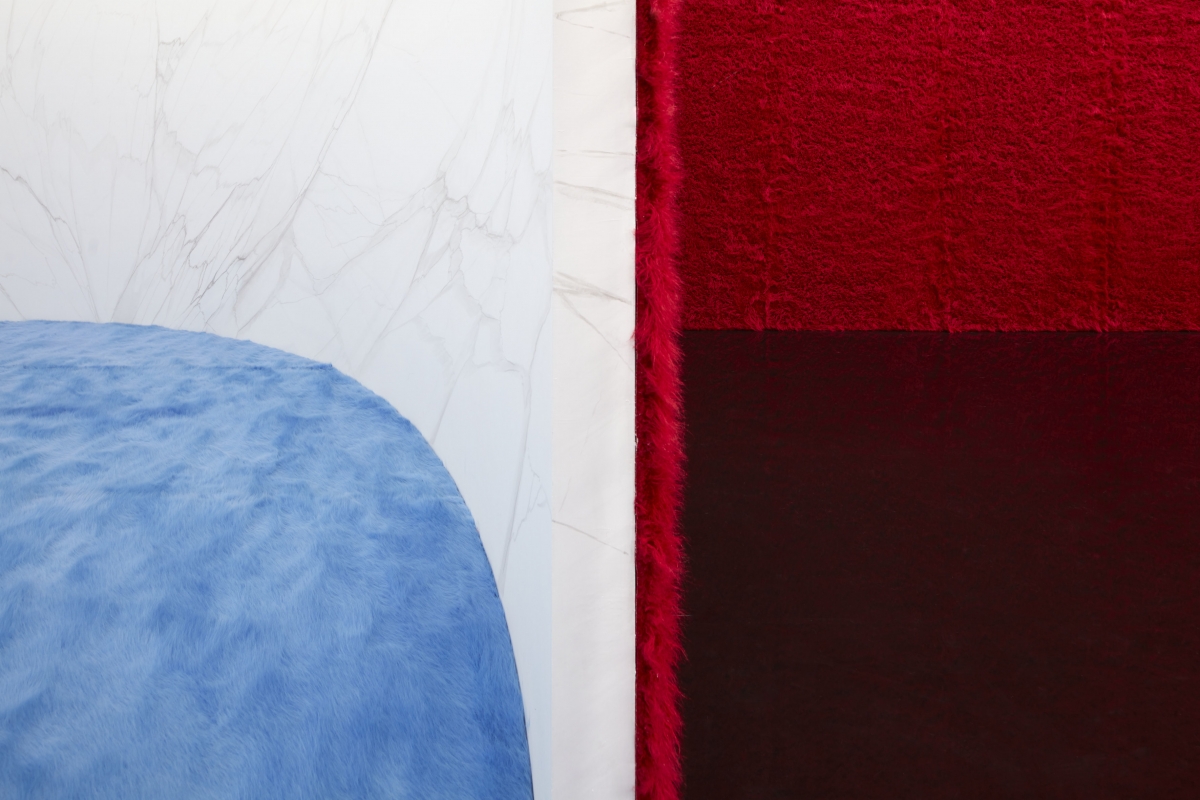
Image courtesy of OMA / ©Agostino Osio
Prada F/W 2021 Menswear Show: ‘Possible Feelings’
- Date 17 Jan. 2021
- Location Fondazione Prada, Milan, Italy
- Creative director Miuccia Prada, Raf Simons
- Set design AMO + Rem Koolhaas
- Design team Giulio Margheri, Alex Tintea, Giada Zuan
An Irresistible Synthesis
Rem Koolhaas has explored the heterogeneity
and distinctive nature of cities. As he stated in his book Delirious New York
(1978), he was fascinated by the Downtown Athletic Club, a discrete skyscraper
with diverse, overlapping programmes, and he converted vertical layers into the
juxtaposition of horizontal stripes in his proposal for the Parc de la Villette
(1982). The concept behind this Prada fashion show is also in line with these
ideas. It addresses the mercurial multiplicity of moments we experience every
day, under the title of ‘passage of time’ and ‘never ending route’.
Traditional fashion shows often use one
unifying background whereas this show presents a collage of different rooms.
Models showcase costumes while walking between distinct and diverse spaces. It
reveals how different a look can be in various environments, thanks to the
myriad backgrounds that could not be recreated in offline fashion shows. Each
room is created using a scaling technique that exaggeratedly emphasizes the
heterogeneous textures of marble, resin, plaster and fur. So they also offer an
impression of the haptic that a digital environment can’t convey. The rooms are
shaped into a circle, square or octagon, which makes them look different from
each other. The combination of these rooms presents a recreation of different
environments and times. The circle represents Pantheon, the square, Bouleuterion,
and the octagon, Basilica of San Vitale. Creating a space by combining a number
of rooms is a traditional method as old as architectural history. This also
shares the concept of Raumplan suggested by Adolf Loos.
In Delirious New York, Koolhaas describes
the synthesis of overlapping heterogeneous programmes found in Manhattan skyscrapers
as an ‘irresistible synthesis’. Following the concept of Raumplan and the
lineage of Manhattan skyscrapers, he united heterogeneous rooms, and at the
same time created a continuous flow that corresponds to Le Corbusier’s
architectural promenade. The synergy between the architectural promenade and
the floor plans of the rooms defines the main characteristics of a space
created by Koolhaas. He has applied such an ironic synergy again in this
fashion show. In his previous projects like Kunsthal (1992) and Casa da Musica
(2005), individual rooms are enclosed with completely different materials, and people
are guided to walk through them. This show is based on the same principle.
The camera angles and video editing
techniques also reveal this interplay between the continuous rhythm and a
spatial irregularity. The camera seems to follow the movements of the models,
yet at some points, they deliberately pull back, get closer, or take a partial
close-up of a the clothes. A steady rhythm intimates a steady paced walk, but
irregular beats accentuate the rich movements of a costume as they synchronize
with a dance scene incongruous to the walks of those models inserted in the
middle of the scene. This intercut between close-ups and a heterogeneous
movement is a new approach that one would not witness in a conventional fashion
show. (written by Chang Yongsoon / edited by Choi Eunhwa)
